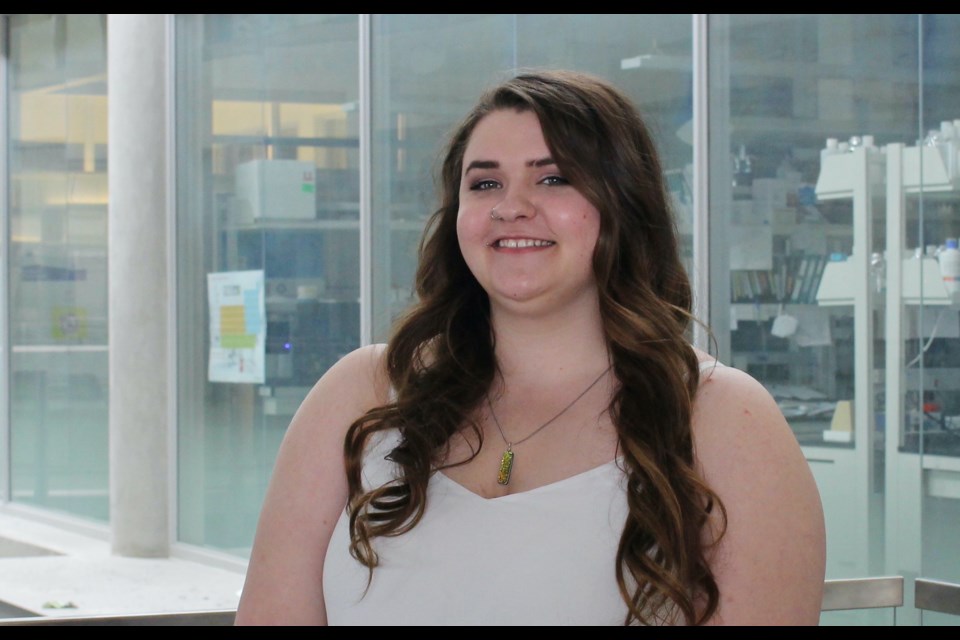OLDS — A university student from Olds will be in Paris, France this week as part of a team competing in a prestigious international genetic engineering competition.
The event, called the iGEM (international Genetic Engineered Machine) Grand Jamboree, takes place Nov. 2-4. About 350 teams from 46 countries will be taking part.
Rachael Rieberger, a 22-year-old University of Alberta student studying molecular, cellular and developmental biology, is coordinating a 17-member U of A team entered in the competition.
As the project coordinator, Rieberger is one of five students and one advisor who will be making the trip.
The team will get 15 minutes to explain its project and will have a booth to display it as well.
A post-doctoral researcher who is also one of the U of A iGEM supervisors suggested she get involved, so she did, and has been working with the team on the project since last February/March.
“She liked the way that I work in the lab and the way that I organize everything,” Rieberger said.
The U of A team is just one of several in Alberta taking part in the competition, including a high school.
Rieberger said unlike most teams which consist mostly of biology or chemistry majors, the U of A contingent includes students majoring in fields like computer science as well as mechanical and electrical engineering.
Their project is to create a spray-on high-tech early warning system for farmers regarding potential diseases in their crops.
"The idea is basically you spray the solution onto the wheat and if it is infected and it's a sick plant, then there's going be a visible red fluorescence, so they'll be little red specks on it.
“And if, if it’s not sick, it doesn't have the pathogen, then it won't have any red fluorescence. You'll just have sprayed a solution and it won't have any change,” Rieberger said.
Another aspect of the project is a drone that will use artificial intelligence (AI) to scan a field to detect those telltale red specks and give farmers the exact co-ordinates of where they’re located.
“So the idea is to kind of have, like, a heat map that a farmer could look at of where the infected plants are in their field,” Rieberger said.
Although she mentioned wheat, Rieberger said it can work on various crops.
There might even be broader applications. Rieberger noted that fungal pathogens show up in humans too.
Rieberger is really excited about the project, not only for the chance to go to Paris and compete in an international competition, but also because it’s right up the alley of her chosen career, microbiology.
That’s the study of and manipulation of extremely tiny organisms, including viruses and bacteria.
“It just fits really well with what I want to do and it gives me more chances to try molecular biology, because I tend to steer more towards like microbiology,” she said. “It really just happened to be because I was in the right place to hear about it.”
Rieberger has been doing everything from working on the project itself a bit to organizing flights, booking hotels, liaising with sponsors and fundraising.
She said the team has also showcased their expertise in the community, including one event at the Telus World of Science in Edmonton.
There, she said, they helped kids use flourescent bacteria to “draw” on petri dishes and plates.
"They grow for a little bit and then the drawings that the kids did on the plates have a design and you can see it, and it's all made out of bacteria,” she said.
Rieberger hopes to find time to do a bit of sightseeing while in Paris but she’s not sure how much time she’ll have because when interviewed she hadn’t seen the team’s precise itinerary.
“I am very excited. I'm also very nervous,” Rieberger said. “It'll be a very fun trip, but it'll be also a lot of work.”



